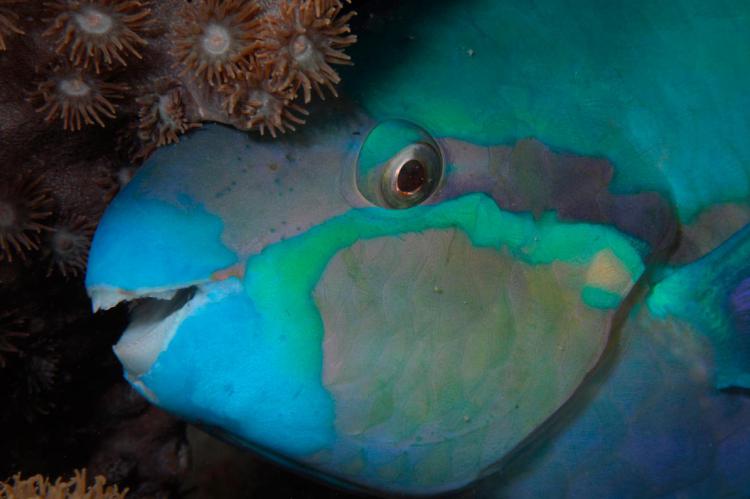Red fish, blue light: How sea creatures change colour
Fish fluoresce more in deep water, converting blue-green light into red. Spots around the eyes potentially act as miniature light sources.
Deep-diving fish have a dilemma. With blue and green the only light penetrating their environment, flashy colour patterns are limited to a minimalist palette. A new study has revealed the fishes' solution. In deep water, they simply fluoresce more, a technique allowing them to convert blue-green light into red.
"Under light conditions that do not provide the full spectrum — the full rainbow of colors that we have at the surface — it's really nice to have fluorescence, because you can still have those missing colors," said study researcher Nico Michiels, professor at Germany’s University of Tüebingen.
Most colour pigments absorb some portions of the light spectrum and bouncing the rest back. For example, a yellow flower absorbs blues, greens and reds, sending yellow shooting back toward the eye of the observer. Fluorescence is slightly different, with responsible molecules absorbing one wavelength of light and emitting another longer wavelength. This occurs through a process of excitation, where the molecule absorbs light energy and then emits a lower-energy wavelength than the one it absorbed in order to return to its resting state.
Protects against sun damage
Many marine animals exhibit fluorescence, frequently in colors not visible to the human eye without filters. Researchers studying fluorescent corals have suggested these colours may offer protection against sun damage. Another theory suggests fluorescence provides marine organisms more freedom of color, thus enhancing communication and camouflage.
Michiels and his colleagues dove to depths of 5m and 20m at sites in the Mediterranean, Red Sea and East Indian Ocean. Specimens of eight known fluorescent species were collected, including five types of goby and a pipefish. Back on land, the fish were housed in aquariums and tested for fluorescence the same day.
Spectrometer measurements revealed fish caught at depths of 20 m fluoresced red more readily than fish of the same species caught at 5m. "In some species, the difference is quite impressive," Michiels said. "Some of these species are six times more fluorescent in deeper water than in shallow water."
Red in blue environment
Red wavelengths of light are rapidly absorbed by water and aren't present in deep water. Traditional pigments for creating red coloration would be useless, as red pigments appear grey without that portion of the spectrum to bounce off them. The fish "can use the ambient light, which can be blue or green — it doesn't matter —and transform it into red or yellow," Michiels said. The fish can be red in a blue environment, if they fluoresce, he added.
The researchers are now working to measure the fishes' fluorescence in their natural environment. As fish often possess spots of fluorescence around their eyes, it is contemplated whether these spots could be utilized as a miniature personal light source, like the headlights on a car. The researchers reported their findings in the journal Proceedings of the Royal Society B.
"Some of these species are six times more fluorescent in deeper water than in shallow water."
—Nico Michiels, professor at University of Tüebingen


